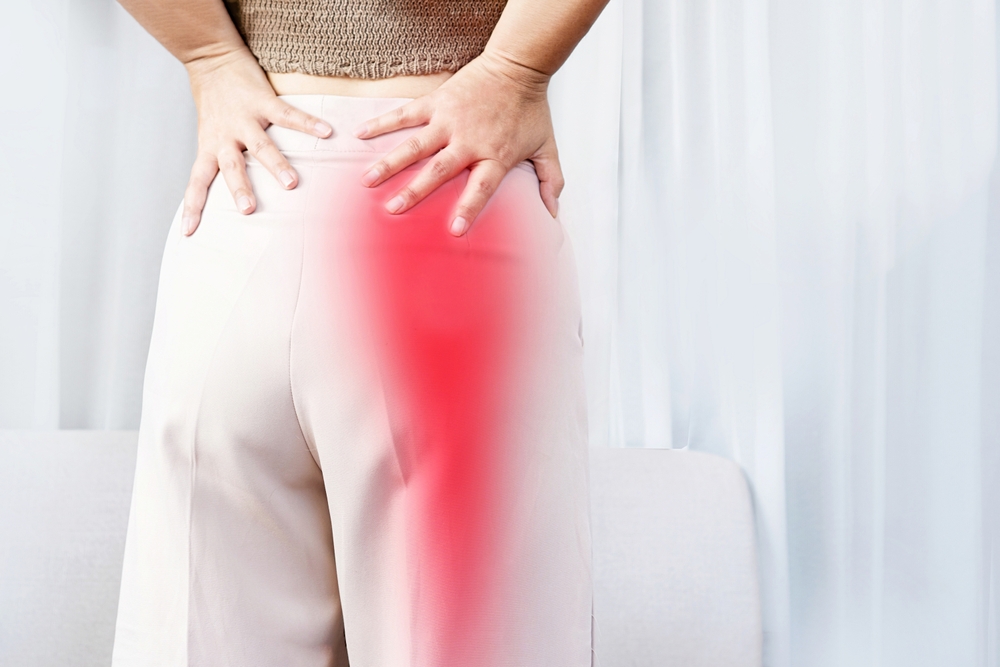
Sciatica is a condition that causes pain radiating along the path of the sciatic nerve, which runs from the lower back through the hips and buttocks and down each leg. It occurs when the sciatic nerve becomes compressed or irritated, leading to a range of uncomfortable symptoms.
Causes of Sciatica
Sciatica can be caused by a variety of factors. One of the primary causes is a herniated disc, which occurs when the soft gel-like material inside a spinal disc ruptures and puts pressure on the surrounding nerves. This pressure can lead to inflammation and irritation of the sciatic nerve.
Another common cause is spinal stenosis, a condition where the spinal canal narrows and puts pressure on the nerves, including the sciatic nerve. Degenerative disc disease, which is the natural wear and tear of the spinal discs, can also contribute to sciatic nerve pain.
Additionally, muscle strains or injuries can lead to sciatica if the muscles around the sciatic nerve become tight or inflamed.
Symptoms of Sciatica
Sciatica can manifest in various ways, and its symptoms can range from mild to severe. The most common symptom is pain that radiates from the lower back down the leg, often on one side of the body. This pain can be sharp, shooting, or burning, and may worsen when sitting, standing, or walking. Other symptoms can include numbness or tingling sensation in the leg or foot, weakness in the affected leg, and difficulty controlling leg movements. In some cases, sciatica can also cause lower back pain, muscle weakness, or loss of bowel or bladder control.
The Importance of Sciatica Prevention
Preventing sciatica is essential to avoid the debilitating pain and discomfort it can cause. By taking proactive measures to prevent sciatica, you can maintain good spinal health and reduce the risk of developing this condition. Prevention is especially crucial for those who are at a higher risk due to their occupation, lifestyle, or pre-existing conditions. By understanding the causes and risk factors, you can take the necessary steps to protect your spine and minimize the chances of sciatica occurring.
Tips to Prevent Sciatica
Maintain good posture: Proper posture is vital for spinal health. When sitting or standing, make sure to keep your back straight, shoulders relaxed, and feet flat on the ground. Avoid slouching or hunching over, as this can strain your back and increase the risk of sciatica.
Practice regular exercise: Engaging in regular physical activity can help strengthen the muscles that support your spine, reducing the risk of sciatica. Focus on exercises that promote core strength and flexibility, such as yoga, Pilates, or swimming. Additionally, incorporating aerobic activities like walking or cycling can improve overall cardiovascular health.
Lift correctly: When lifting heavy objects, it is crucial to use proper lifting techniques to avoid strain on your back. Bend at the knees and lift with your legs, keeping the object close to your body. Avoid twisting or jerking motions while lifting, as these can increase the risk of disc herniation and sciatica.
Take breaks from prolonged sitting: If your job requires long hours of sitting, make sure to take regular breaks to stand and stretch. Sitting for extended periods can put pressure on your spine and increase the risk of sciatica. Incorporate short walks or movements into your routine to keep your back and legs active.
Maintain a healthy weight: Excess weight can put additional stress on your spine, increasing the risk of sciatica. By maintaining a healthy weight through a balanced diet and regular exercise, you can reduce the strain on your back and lower the chances of developing sciatica.
The Benefits of Non-surgical Decompression for Sciatica
Non-surgical decompression is a treatment option for sciatica that aims to relieve pressure on the affected nerves and reduce pain. This non-invasive procedure involves the use of a specialized table or device that gently stretches the spine, creating negative pressure within the discs. This negative pressure allows the herniated or bulging discs to retract, relieving the pressure on the sciatic nerve. Non-surgical decompression can provide several benefits for individuals suffering from sciatica, including pain relief, improved mobility, and reduced reliance on medication. It is a viable alternative to surgical interventions and can offer long-lasting results.
Prioritizing Prevention for Your Sciatica Today
By understanding the causes, symptoms, and risk factors associated with sciatica, you can take proactive steps to keep leg pain at bay. Maintaining proper posture, engaging in regular exercise, and adopting healthy lifestyle habits can help prevent the onset of sciatica. In cases where sciatica does occur, non-surgical decompression can be an effective treatment option. By prioritizing prevention and seeking appropriate treatment when necessary, you can protect your spine and enjoy a pain-free life.
If you are experiencing symptoms of sciatica or want to learn more about prevention, consult with our professionals at Elevate Life Health Center in our Kansas City, Missouri office. We can provide personalized guidance and recommend the most suitable prevention strategies for your specific needs. Call (816) 339-5900 to schedule an appointment today.









